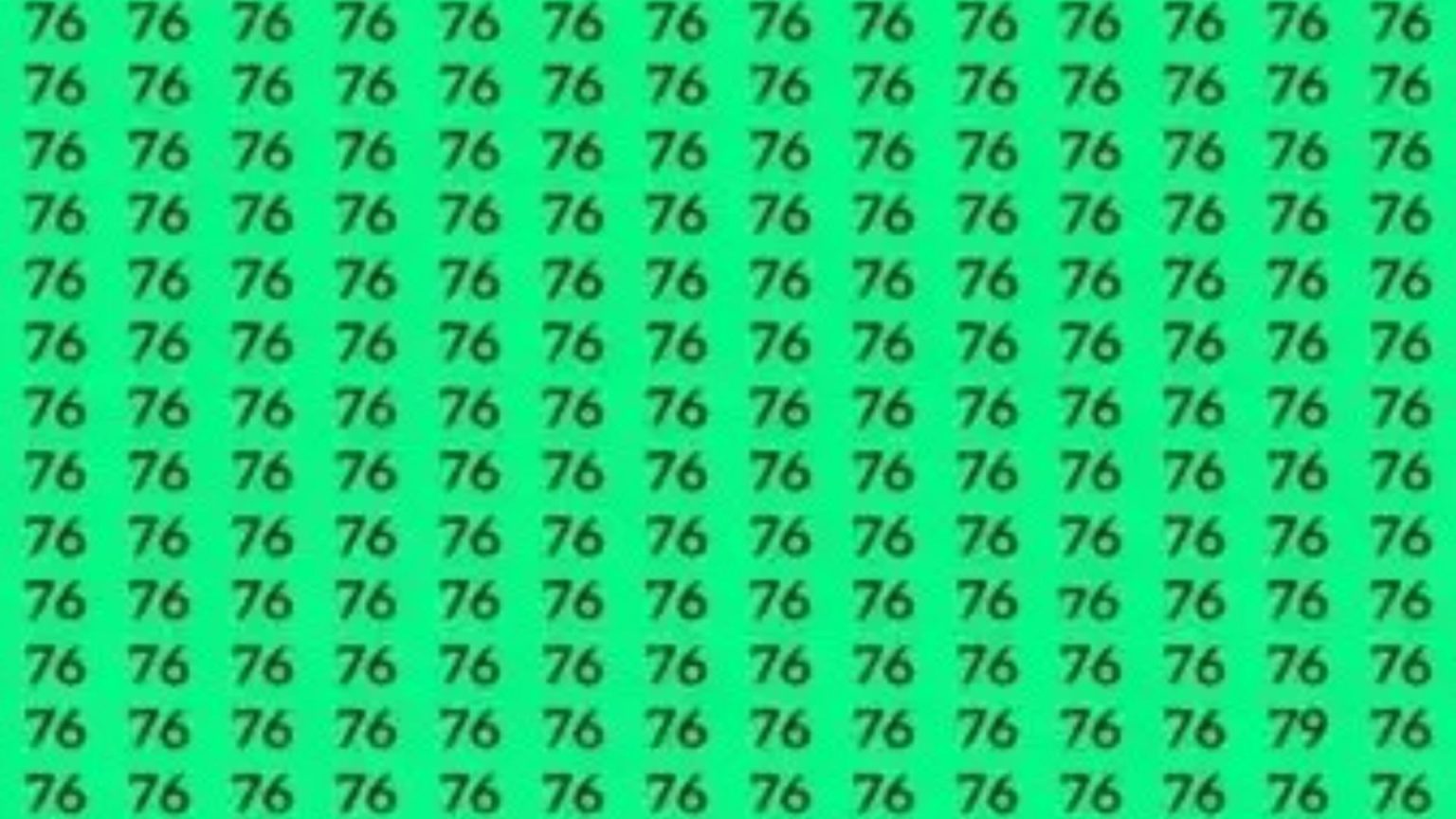This brainteaser presents a grid filled with the number 76, challenging the reader to find an odd number hidden within the pattern. The task requires keen observation and attention to detail, pushing participants to recall their basic math knowledge and scan the image for discrepancies. While the puzzle might initially appear mathematically complex, it relies more on visual acuity and the ability to discern subtle differences in shapes rather than intricate calculations. The repetitive nature of the grid and the seemingly identical numbers create a visual maze, demanding focused concentration to identify the anomaly.
The challenge lies in breaking free from the structured layout of the grid, which tends to restrict the eye’s natural scanning motion. Instead of following the rows and columns, a more randomized search proves effective. The hint provided focuses on the number six, suggesting a subtle alteration in its form might reveal the hidden odd number. The ability to solve the puzzle quickly is indicative of strong observational skills, cognitive speed, and the capacity to process substantial visual information under pressure. Furthermore, it tests the ability to maintain focus amidst potentially distracting elements, such as the repetitive numbers and the bright green background.
Beyond the immediate challenge, engaging with optical illusions and brainteasers offers several cognitive benefits. These activities stimulate various brain regions, promoting mental agility, flexibility, and improved problem-solving skills. They also enhance memory function by requiring recall and recognition of patterns. Furthermore, puzzles nurture creativity by encouraging unconventional thinking and innovative approaches to problem-solving. The focused concentration required to decipher these visual riddles also contributes to improved attention span and concentration levels. Lastly, the inherently enjoyable nature of these puzzles can provide a form of relaxation and stress relief, offering a productive way to unwind and engage the mind.
Research further supports the positive impact of optical illusions and brainteasers on cognitive function. Studies have shown that they can even improve eyesight by exercising the eye muscles and enhancing the ability to perceive small details. They also boost brain activity, potentially reducing the risk of dementia. By stimulating multiple brain regions simultaneously, these puzzles offer a comprehensive mental workout. The combination of cognitive stimulation, entertainment, and relaxation makes them a valuable tool for maintaining mental sharpness and overall well-being.
The solution to the brainteaser is the presence of the number 79 cleverly disguised among the 76s. The subtle difference in the shape of the ‘9’ compared to the ‘6’ makes it easy to overlook, requiring a sharp eye to detect. This highlights the importance of paying close attention to details and not letting preconceived notions or the overwhelming presence of similar shapes cloud one’s judgment. The challenge lies not in complex mathematical calculations but in the ability to discern subtle visual differences.
Following the initial brainteaser, several other visual puzzles are offered to further challenge the reader’s observational skills. These range from finding a time traveler in a period-specific party scene to identifying a lemon among other fruits and spotting a snowman in a wintry landscape. Each puzzle presents a unique set of visual challenges, testing different aspects of visual perception and cognitive processing. These additional puzzles reinforce the benefits of engaging in such activities regularly, providing a continuous opportunity to hone one’s observational skills, enhance cognitive function, and enjoy a mentally stimulating pastime. They further underscore the interplay between visual perception, cognitive processing, and problem-solving abilities.
The variety of puzzles offered reinforces the idea that these exercises cater to a broad range of cognitive skills. The time traveler puzzle, for example, requires an understanding of historical context and the ability to spot anachronisms. The lemon puzzle tests pattern recognition and the ability to differentiate between similar objects. The snowman puzzle requires discerning a specific shape against a camouflaging background. These diverse challenges ensure a comprehensive mental workout, engaging different aspects of visual processing and problem-solving. They also provide a fun and engaging way to test one’s mental agility and attention to detail.


